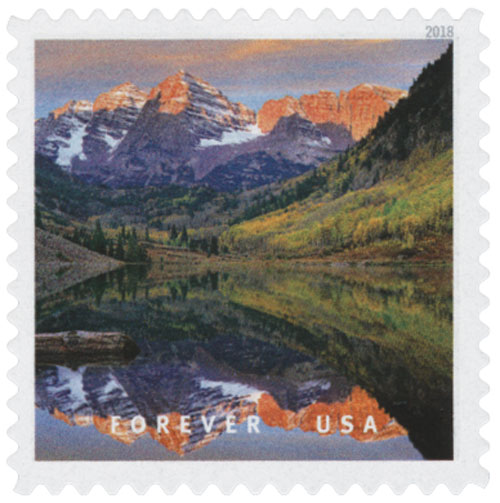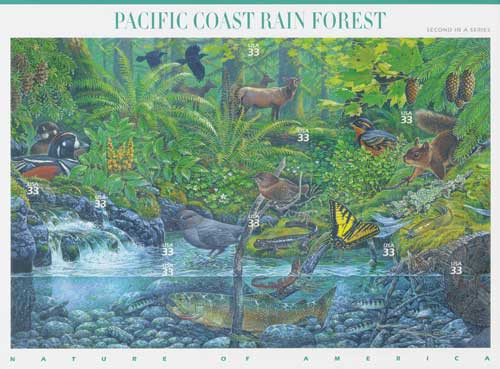
# 3378 - 2000 33c Nature of America: Pacific Coast Rain Forest
33¢ Pacific Coast Rain Forest
Set of 10
City: Seattle, WA
Quantity: 10,000,000
Printed by: Banknote Corporation of America
Printing Method: Lithographed
Perforations: Serpentine die cut 11.25 x 11.5
Color: Multicolored
The Wilderness Act

On September 3, 1964, President Lyndon Johnson signed the Wilderness Act. The act protected 9 million acres from development and created the National Wilderness Preservation System that consists of more than 111 million acres today.
There has long been a debate over the protection of wilderness areas. Wilderness is defined as “an area where the earth and community of life are untrammeled by man, where man himself is a visitor who does not remain.”
Some believed that it was important to protect these areas; that they are necessary to balance out industrial expansion. Those that oppose it argued that it was senseless to lock away the valuable resources that these lands held.
33¢ Pacific Coast Rain Forest
Set of 10
City: Seattle, WA
Quantity: 10,000,000
Printed by: Banknote Corporation of America
Printing Method: Lithographed
Perforations: Serpentine die cut 11.25 x 11.5
Color: Multicolored
The Wilderness Act

On September 3, 1964, President Lyndon Johnson signed the Wilderness Act. The act protected 9 million acres from development and created the National Wilderness Preservation System that consists of more than 111 million acres today.
There has long been a debate over the protection of wilderness areas. Wilderness is defined as “an area where the earth and community of life are untrammeled by man, where man himself is a visitor who does not remain.”
Some believed that it was important to protect these areas; that they are necessary to balance out industrial expansion. Those that oppose it argued that it was senseless to lock away the valuable resources that these lands held.

















